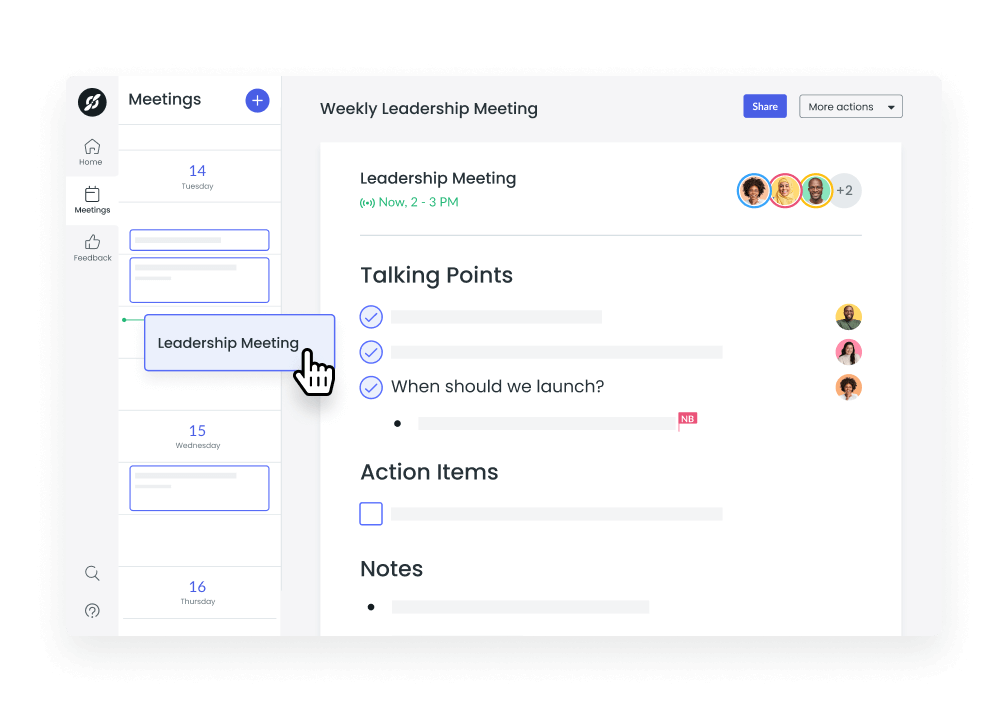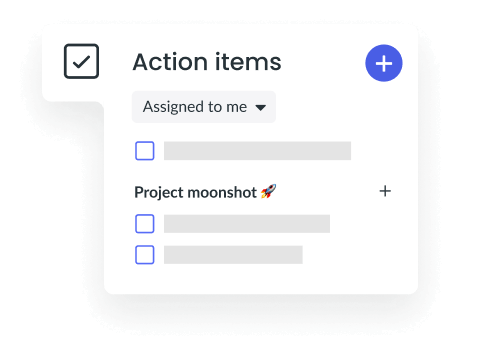Pomodoro Technique: What It Is & How to Implement It
Learning the Pomodoro Technique will get you a foolproof way to manage your time well! Learn everything you need to know about it here.
Pomodoro isn’t just a pasta sauce. The word, which also means “tomato” in Italian (the plural: “pomodori”), is also a useful time management technique. If you feel like you’re one of the 87.5% of people who don’t use a dedicated time management system, consider this your easy, foolproof way to get started. Not only is this technique digestible (that is, easy to learn), but it’s also super easy to implement. You can even practice this technique in small amounts to get comfortable with it before choosing to make it a part of your regular work or study style.
- How does the Pomodoro Technique work?
- Why the Pomodoro Technique works
- What are the 5 steps in the Pomodoro Technique?
- 8 ideas to do during your pomodoro breaks
- What are the benefits of using the Pomodoro Technique?
- How to master the Pomodoro Technique
How does the Pomodoro Technique work?
The Pomodoro Technique is an approach to help you manage your time better by integrating short-focus sprints with frequent breaks. The technique is based on 25-minute intervals of focus time, with 5-minute breaks between each interval. Completing both the 25-minute and 5-minute components is called a work interval, or pomodoro (now you see where we get the name from!) For every four pomodoros you complete, mix in a longer, 15- to 30-minute break for a full reset.

Take control of your schedule and save time
With a collaborative meeting agenda, you can take control of your schedule and save time by reducing unproductive meetings. Try Fellow today and experience the benefits of better meetings!

Why the Pomodoro Technique works
- Creates a sense of urgency. You have a small amount of time to work within, so there’s no time to waste.
- Helps to resist interruptions. With frequent breaks, you already know when you’re allowed to get distracted next.
- Prevents procrastination. Short work intervals keep adrenaline high, meaning you’re more likely to get down to business right away.
- Makes you aware of how you spend your time. Each pomodoro focuses on a specific task, so you can plan out which tasks are most important to cover and ensure you schedule a pomodoro for each of them.
- Prevents decision fatigue. Limiting the time you have to work on a project helps you make decisions faster and avoid perfectionism. It also gives you regular breaks to rest your mind so you can make those snap decisions with more focus.
- Gamifies your productivity. C’mon, give yourself a prize for that hard work! At the end of every four pomodoros, you get a longer break. Use this to go for a walk and pick up a coffee. Or, take whatever other form of rest feels right to you.
What are the 5 steps in the Pomodoro Technique?
- Identify a task (or tasks) that you need to complete. It might be helpful to look into a tool to help track action items from meetings in one place, for example.

- Set a timer for 25 minutes. Decide whether a physical or digital timer makes more sense for your work or study style.
- Work on a task with no distractions. Find somewhere quiet where you can focus for the full interval, and put your phone on do not disturb (DND)!
- When the alarm sounds, take a 5-minute break. Take this opportunity to go for a walk, get water or a snack, stretch, or scroll social media—whatever helps you reset.
- Repeat the process 3 more times, meaning you’ll complete four pomodoros in a row.
- Take a longer 30-minute break and start again. This longer break is a good time to add your “prize” if you’re gamifying the process for yourself.
8 ideas to do during your pomodoro breaks
- Do a quick tidying of your workspace.
- Take a screen break. Go for a walk or spend some time looking out the window.
- Review your to-do list to prepare for the next focus session.
- Call or message family or friends, or check in on your social media if you need to.
- Listen to a podcast (we heard the Supermanagers podcast is pretty great!)
- Make doodles on a notepad, which can be a good creative booster.
- Get a drink of water or a coffee or whatever you need to stay fueled.
- Stand up for a bit of yoga to stretch out your body and decompress your mind.
What are the benefits of using the Pomodoro Technique?
- Makes tasks less daunting
- Improves the quality and quantity of your work
- Prevents mental exhaustion
- Breaks the habit of multitasking
- Makes planning easier
- Increases accountability and willpower
1Makes tasks less daunting
By breaking up large projects into smaller tasks, you make your work more approachable. And with more approachable tasks, you’re more likely to feel motivated to work on them! For example, if you have a big final exam coming up, try breaking the course content up to review one fourth of a chapter or lesson in each pomodoro. Within four pomodoros, you’ll cover the whole course and have a big break to reset before tackling another chapter.
2Improves the quality and quantity of your work
Keeping your level of focus on smaller areas means that you’re able to give greater attention to detail to each of those sections. As long as you schedule a realistic amount of work to be done with each pomodoro, it’s possible you’ll also have time for more revisions on your work.
3Prevents mental exhaustion
Adding frequent breaks into your study or work routine is great for a lot of reasons. For example, you can use your break to relax, inspire creativity, plan, or have some fun with a friend or pet! The breaks in between pomodoros are your own time to use as you like for whatever your brain and body are needing.
4Breaks the habit of multitasking
Multitasking doesn’t actually make you more productive, surprisingly. In fact, multitasking is actually your brain stopping and restarting focus on a lot of things simultaneously, and really, really quickly, which will actually lead you to burn out sooner. Instead, focus on one project at a time to keep your quality of work high and your brain less stressed.
5Makes planning easier
Before jumping into your pomodoros, you can create a schedule of what you hope to complete in each one. As each pomodoro is 25 minutes long, you can also easily calculate how long it will take you to complete the full project. This is especially helpful if you plan in advance and need multiple days to cover the full project’s work.
6Increases accountability and willpower
By the end of your pomodoro, you should have completed the task. If not, reflect on what could have been improved. For example, did you plan too much for the allotted focus time? Or did you get distracted? Whatever your reason, the Pomodoro Technique makes it easier to narrow down excuses for why projects aren’t getting completed and enables you to do better going forward.
How to master the Pomodoro Technique
- Plan your pomodoros in advance
- Personalize the technique
- Decide when you’re most alert
- Turn off digital distractions while you work
- Reward yourself during your breaks
1Plan your pomodoros in advance
This is especially important if you’re working on a big project at work or studying for a final exam. Planning in advance means that you’ll be able to calculate how long it will take you to complete the entire project, and ensure you can schedule any distractions (for example, deliveries to home or phone calls from your boss) to take place outside of your focus intervals.
2Personalize the technique
This technique, while most commonly practiced in the 25-5 system, isn’t set in stone. If you feel like you want to do 2 complete pomodoros before taking a 20-minute break, all the power to you! Just make sure that you’re not putting too much pressure on yourself to complete a lot of pomodoros in a row before taking a large break. The purpose of this technique is to reward yourself at regular intervals throughout the process to keep your motivation high and stress levels low.
3Decide when you’re most alert, and use your breaks to keep up the energy
If you’re not a morning person, doing this at 8 a.m. won’t be the best move. Think about the time of day when you feel most productive and try to plan pomodoros around then. Additionally, especially if you’re planning in advance, consider scheduling your pomodoros at the same times when you’ve time blocked your calendar. This means you’ll make the most of your pre-planned deep focus time.
4Turn off digital distractions while you work
One of our biggest distractions is our cell phones. Consider putting yours on do not disturb or leave it outside of the room (out of sight, out of mind!) when you’re working. If you’re practicing the Pomodoro Technique at work, mute any notifications from your email or messenger (like Slack) that might interrupt your sessions. A lot of business messenger systems allow you to create a status to notify team members that you’re in deep focus mode, too. Leverage this capability to ensure they’re not calling you about non-urgent requests while you’re time blocked or working through pomodoro intervals.
5Reward yourself during your breaks
What makes the pomodoro approach so appealing and motivating is the idea that you get rewards so often! Getting rewarded frequently and in small doses keeps your energy and engagement levels high. It makes you feel very productive, so you should try to make the most of your breaks to show yourself that you’re proud of how well you completed a task.
Parting advice
The Pomodoro Technique is such a great approach for anyone who needs to focus, regardless if it’s for work, school, or even diving into a personal project. To make pomodoros work for you, remember that it’s okay to personalize the timings and frequency of your breaks, as long as you’re not pushing yourself too hard. It might take some time to figure out the routine that works best for you, so feel free to experiment with doing pomodoros at different lengths and at different times of the day. If you’re still feeling stuck, try practicing with a coworker or friend who can help you stay accountable in your focus periods. In no time, you’ll be ultra-productive and feel very accomplished for all the micro-tasks you’ve completed!










